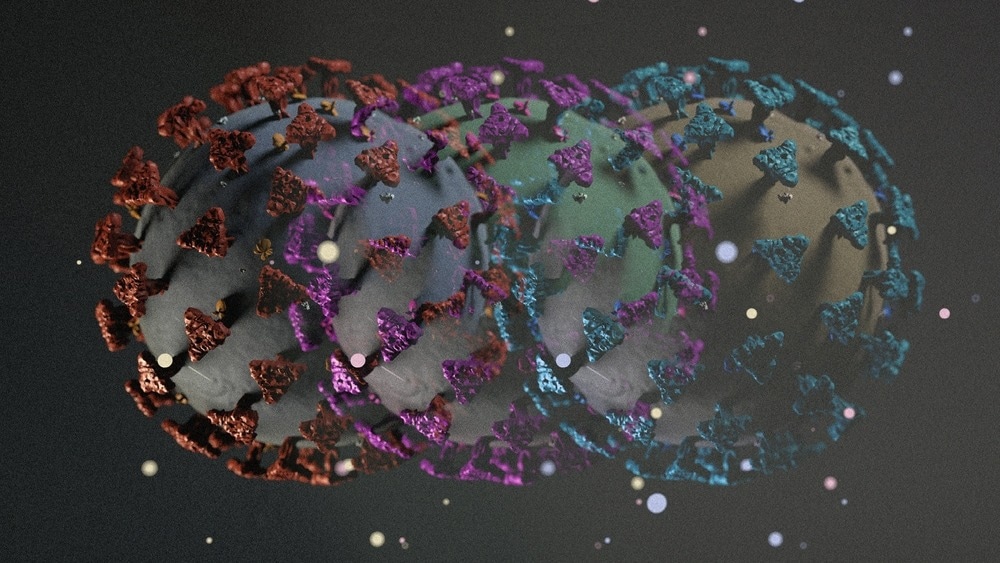In a recent study published in The Lancet Infectious Diseases, researchers evaluated the effects of hybrid immunity and booster vaccination on Omicron sublineages.
 Study: Effect of hybrid immunity and bivalent booster vaccination on omicron sublineage neutralisation. Image Credit: Dkoi/Shutterstock
Study: Effect of hybrid immunity and bivalent booster vaccination on omicron sublineage neutralisation. Image Credit: Dkoi/Shutterstock
Background
Vaccination-elicited neutralizing antibodies (nAbs) target the severe acute respiratory syndrome coronavirus 2 (SARS-CoV-2) spike (S) protein to neutralize the virus. However, most currently used coronavirus disease 2019 (COVID-19) vaccines, including messenger ribonucleic acid (mRNA) vaccines, use the S protein of the strains that circulated during the beginning of the pandemic (e.g., B.1 lineage).
More recently developed bivalent mRNA vaccines use the S proteins of both - the B.1 lineage and Omicron BA.5 sublineage. They have shown good immunogenicity against Omicron sublineages in mouse models. However, data on their effectiveness in humans is inadequate.
About the study
In the present study, researchers developed particles pseudotyped (PP) with S protein(s) from Omicron sublineages to mimic antibody-mediated SARS-CoV-2 neutralization. They examined the effects of both vaccine- and prior infection-elicited nAbs against BA.1, BA.4, BA.5, BA.4.6, BA.2.75.2, BJ.1, and BQ.1.1 Omicron sublineages. Early Omicron sublineages, such as BA.4 and BA.5, shared an identical S protein. Its sublineage BA.2.75.2 is circulating primarily in India, whereas BQ.1.1 is in the United States (US) and Europe. Notably, BJ.1 is the parental lineage of a highly mutated XBB SARS-CoV-2 recombinant.
The team first tested neutralization sensitivity to antibodies elicited by three doses of a vaccine regimen and subsequent monovalent and bivalent boosting. Next, they tested the effect of vaccination plus breakthrough infection by BA.1/BA.2/BA.5 sublineages.
Study findings
The neutralization sensitivity of B.1pp was the highest, a particle pseudotyped with the B.1 spike and next stood BA.4-5pp and BA.1pp. However, the neutralization of BJ.1pp and BA.4.6pp was ~2.2 times, and that of particles pseudotyped with BA.2.75.2 and BQ.1.1 S proteins was ~15.5 times lower than BA.4-5pp. Together, these results suggested that Omicron sublineages, BQ.1.1, in particular BA.2.75.2, possessed a higher capacity to evade nAbs elicited by diverse vaccinations.
Breakthrough infections by BA.1/BA.2.BA.5 in triply vaccinated individuals induced 3.7 to 8.5 times higher Omicron sublineage neutralization. However, triple vaccination, BA.2/BA.1 breakthrough infection, and a subsequent bivalent vaccine attained the highest Omicron sublineage neutralization. Together, this combination induced 17.6 times more neutralization than triply vaccinated individuals with no breakthrough infection by BA.1/BA.2.
Conclusions
The study results showed that Omicron sublineages BA.2.75.2 and BQ.1.1 escaped neutralization, regardless of the vaccination history. Mono- and bivalent vaccine boosters induced two and 2.1 times higher neutralizing activity, respectively.
In addition, they increased neutralization breadth. Yet, relative and BQ.1.1- and BA.2.75.2-specific neutralization sensitivity remained on the lower side. This finding elucidates the phenomenon of immune imprinting triggered by primary vaccination with vaccines attacking the B.1 S.
The increased affinity, avidity, and anti-pathogen activity of elicited nAbs and double stimulation with two Omicron antigens could not diminish the effects of immune imprinting. Thus, future vaccination strategies should pursue overcoming immune imprinting by parental SARS-CoV-2 antigens.